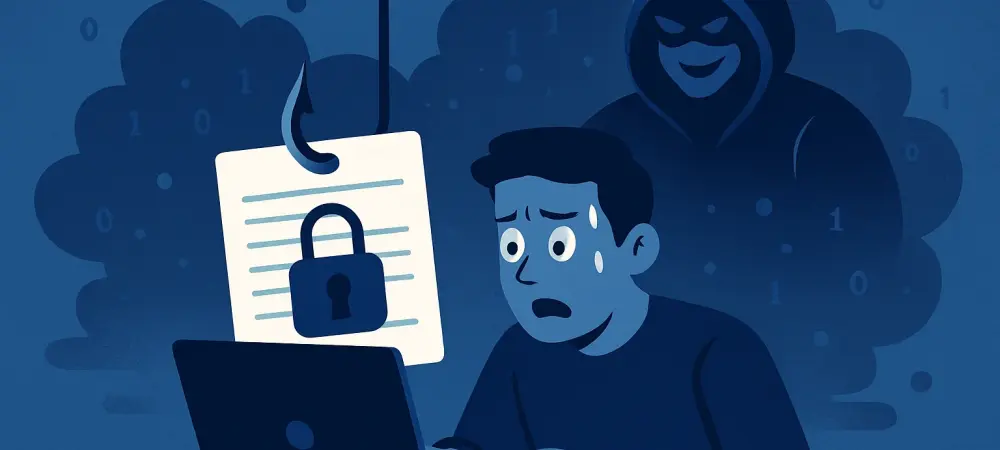Unveiling a Cybercrime Epidemic: The Stakes of Phishing-as-a-Service
In an era where digital credentials are as valuable as gold, the emergence of phishing-as-a-service (PhaaS) platforms like RaccoonO365 has sent shockwaves through the cybersecurity market, affecting thousands of users across 94 countries. This toolkit, designed to steal Microsoft 365 credentials, represents a growing segment of the cybercrime economy, where even non-technical individuals can launch devastating attacks for as little as $355. The recent takedown of 338 domains linked to RaccoonO365 by Microsoft and Cloudflare underscores the urgent need to analyze the market dynamics of such threats. This analysis aims to dissect the trends fueling PhaaS platforms, evaluate the impact of collaborative disruptions, and project future challenges in the cybersecurity landscape. By delving into this critical issue, stakeholders can better understand the evolving nature of digital threats and the strategies required to combat them.
Decoding the Phishing Market: Trends and Data Driving RaccoonO365’s Reach
The Boom of Accessible Cybercrime Tools
The cybersecurity market has witnessed a troubling surge in PhaaS platforms, with RaccoonO365 epitomizing the trend of accessible cybercrime tools. These subscription-based models, priced at $355 for 30 days or $999 for 90 days, have lowered the entry barrier for malicious actors, enabling even novices to execute large-scale phishing campaigns. Microsoft estimates that 100-200 subscriptions have been sold, generating at least $100,000 in cryptocurrency payments, a figure likely understated due to the underground nature of these transactions. This democratization of cybercrime tools has expanded the market of potential attackers, creating a scalable business model that thrives on ease of use and affordability.
Sophistication in Simplicity: Tactics Fueling Market Growth
Beyond accessibility, the sophistication of RaccoonO365’s tactics has contributed to its market penetration, particularly in targeting Microsoft 365 credentials. The toolkit employs deceptive phishing emails that mimic trusted brands like Microsoft, DocuSign, and Adobe, luring users to fraudulent pages designed to harvest credentials. Advanced evasion techniques, including the use of legitimate services like Cloudflare Turnstile for CAPTCHA challenges, enhance the credibility of these attacks. With over 5,000 credentials stolen and the ability to input 9,000 target email addresses daily, the platform’s efficiency has made it a preferred choice for cybercriminals, driving demand in the underground economy.
Sectoral and Regional Impact: A Growing Market Footprint
The market impact of RaccoonO365 extends across regions and sectors, with significant implications for industries like healthcare. In the United States alone, over 2,300 organizations, including at least 20 healthcare entities, have been targeted, highlighting the platform’s focus on high-value sectors. The global reach spans 94 countries, amplifying the risk of cascading threats like ransomware following initial credential theft. This widespread footprint underscores a growing market for phishing tools that exploit vulnerabilities in critical infrastructure, pushing cybersecurity vendors to adapt rapidly to an expanding threat landscape.
Projecting the Future: Challenges and Opportunities in the Cybersecurity Market
Escalating Threats with AI Integration
Looking ahead, the integration of AI-powered features like RaccoonO365 AI-MailCheck signals a future where phishing attacks become even more precise and scalable. This development suggests a market shift toward increasingly sophisticated tools that can bypass traditional defenses such as multi-factor authentication. As cybercriminals leverage emerging technologies, the cybersecurity industry must invest in predictive analytics and AI-driven countermeasures to stay ahead. Projections indicate that without proactive innovation, the market for PhaaS tools could grow exponentially over the next few years, from 2025 to 2027, posing a severe risk to global digital security.
The Power of Collaborative Disruptions
The recent operation by Microsoft’s Digital Crimes Unit and Cloudflare, which seized 338 domains linked to RaccoonO365, offers a glimpse into the potential of collaborative efforts to disrupt the cybercrime market. By implementing phased takedowns and banning associated services, the partnership has increased operational costs for threat actors, setting a precedent for large-scale interventions. This trend of public-private partnerships is likely to shape the market, encouraging more technology firms to join forces with law enforcement. However, the resilience of groups like RaccoonO365, evidenced by their plans to adapt post-disruption, indicates that such efforts must be sustained to achieve lasting market impact.
Regulatory and Enforcement Hurdles
Another critical factor shaping the future market is the challenge of enforcement and prosecution across borders. The identification of a Nigeria-based individual as the mastermind behind RaccoonO365, alongside a criminal referral to international law enforcement, highlights the complexities of holding cybercriminals accountable. As the market for phishing tools operates in a borderless digital space, regulatory frameworks must evolve to facilitate international cooperation. Without streamlined legal mechanisms, the underground market for PhaaS platforms will continue to thrive, outpacing defensive measures and perpetuating financial and societal harm.
Reflecting on the Path Forward: Strategic Insights for Market Resilience
The market analysis of the RaccoonO365 takedown by Microsoft and Cloudflare reveals a cybercrime landscape increasingly driven by accessibility, sophistication, and global reach. This operation marked a pivotal moment in disrupting the phishing-as-a-service economy, yet the adaptive response from threat actors underscores the persistent nature of these challenges. Moving forward, stakeholders in the cybersecurity market must prioritize investment in advanced detection technologies to counter AI-enhanced threats. Strengthening public-private collaborations proved essential in this case and should be expanded to include more industry players. Additionally, advocating for robust international regulatory frameworks emerges as a key step to address cross-border cybercrime. By focusing on these strategic imperatives, the industry can build a more resilient defense against the evolving market of digital threats.

